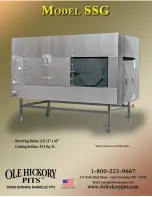
en
Tested for you in our cooking studio
26
Side dishes and vegetables
Here, you can find information on cooking vegetables,
potatoes and frozen potato products.
Use the settings listed in the table.
Yoghurt
You can use your appliance to make your own yoghurt.
Remove accessories and shelf supports from the
cooking compartment. The cooking compartment must
be empty.
1.
Heat 1 litre of milk (3.5% fat) to 90 °C on the hob
and then leave it to cool down to 40 °C.
It is sufficient to heat UHT milk to 40 °C.
2.
Stir in 30 g (approx. 1 tbsp) (chilled) yoghurt.
3.
Pour into cups or small jars with lids and cover.
4.
Place the cups or jars onto the cooking
compartment floor and use the settings indicated in
the table.
5.
After making the yoghurt, leave it to cool in the
refrigerator.
Acrylamide in foodstuffs
Acrylamide is mainly produced in grain and potato
products prepared at high temperatures, such as potato
crisps, chips, sliced bread, bread rolls, bread or fine
baked goods (biscuits, gingerbread, spiced biscuit).
Drying
You can achieve outstanding drying results with hot air.
With this type of preserving, flavours are concentrated
as a result of the dehydration.
Only use unblemished, fresh fruit, vegetables and herbs
and wash them thoroughly. Line the wire rack with
greaseproof paper or parchment paper. Drain the
excess water from the fruit and then dry the fruit
thoroughly.
If necessary, cut it into pieces of equal size or slice it
thinly. Place unpeeled fruit onto the dish with the sliced
surfaces facing upwards. Ensure that neither fruit nor
mushrooms overlap on the wire rack.
Grate vegetables and then blanch them. Drain the
excess water from the blanched vegetables and spread
them evenly on the wire rack.
Dry herbs on the stem. Spread the herbs out evenly and
slightly heaped on the wire rack.
Use the following shelf positions for drying:
■
1 wire rack: Position 3
■
2 wire racks: Positions 3 + 1
Turn very juicy fruit and vegetables several times. After
drying, remove the dried food from the paper
immediately.
In the table, you will find settings for drying various
foodstuffs. The temperature and drying time are
Dish
Accessories/cookware
Shelf posi-
tion
Heating
function
Tempera-
ture in °C
Cooking
time in min
Cold grilled vegetables
Universal pan
5
(
3
10-20
Baked potatoes, halved
Universal pan
3
<
160-180
45-60
Potato products, frozen, e.g. chips, croquettes,
potato pockets, rösti
Universal pan
3
<
190-210
25-35
Chips, 2 levels
Universal pan + baking tray
3+1
<
190-210
30-40
Dish
Accessories/cookware
Shelf position
Heating
function
Tempera-
ture in °C
Cooking time
Yoghurt
Cup/jar
Cooking compart-
ment floor
<
-
4-5 hr
Tips for keeping acrylamide to a minimum
General
■
Keep cooking times as short as possible.
■
Cook food until it is golden brown, but not too dark.
■
Large, thick pieces of food contain less acrylamide.
Baking
With top/bottom heating at max. 200 °C.
With hot air at max. 180 °C.
Biscuits
With top/bottom heating at max. 190 °C.
With hot air at max. 170 °C.
Egg or egg yolk reduces the production of acrylamide.
Oven chips
Spread out a single layer evenly on the baking tray. Cook approx. 400-600 g at once on a baking tray so
that the chips do not dry out and become crunchy.







































